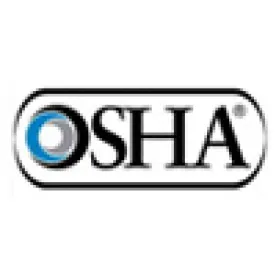OSHA issues new guidance to Regional Administrators and State Plan Designees on the enforcement of the Process Safety Management (PSM) standard’s recognized and generally accepted good engineering practices (RAGAGEP) requirements. The new guidance clarifies OSHA’s positions with respect to enforcing the PSM standards that reference or imply the use of RAGAGEP. The memorandum provides the most detailed information on how OSHA will handle PSM inspections with respect to the RAGAGEP requirements and it includes 16 detailed enforcement considerations that inspectors will evaluate when reviewing an employer’s compliance. The memorandum also provides specific guidance on when citations may be issued.
Employers covered under 29 C.F.R. § 1910.119 should carefully review their compliance with the following standards in light of this new guidance and OSHA’s renewed focus on the proper application of RAGAGEP to covered processes and equipment:
-
119(d)(3)(ii) – The employer shall document that equipment complies with RAGAGEP.
-
119(d)(3)(III) – For existing equipment designed and constructed in accordance with codes, standards, or practices that are no longer in general use, the employer shall determine and document that the equipment is designed, maintained, inspected, tested, and operating in a safe manner.
-
119(j)(4)(ii) – Inspection and testing procedures shall follow RAGAGEP.
-
119(j)(4)(iii) – The frequency of inspections and tests of process equipment shall be consistent with applicable manufacturers’ recommendations and good engineering practices, and more frequently if determined to be necessary by prior operating experience.
Issuance of this memorandum signals that inspectors will be looking more closely at these requirements during PSM-related inspections and that they will specifically be looking for information on whether employers have identified and documented the appropriate RAGAGEP that applies to each piece of equipment and are following the inspection and testing requirements including frequency of those inspections and tests.
Meaning of RAGAGEP
In this enforcement memorandum, OSHA recognizes that while the PSM standard does not define RAGAGEP and employers may select the RAGAGEP that will apply to their covered processes, there are several consensus standards that are widely adopted by federal, state and municipal jurisdictions and are generally accepted by OSHA as RAGAGEP. Those standards include the National Fire Protection Association (NFPA) 101 Life Safety and NFPA 70 National Electric. In addition to these consensus standards, there are several published consensus documents that are widely used by certain PSM-covered industries and are generally accepted by OSHA as RAGAGEP, such as ASME B32.3 Process Piping Code and the International Institute of Ammonia Refrigeration’s (IIAR) ANSI/IIAR 2-2008 – Equipment, Design and Installation of Closed-Circuit Ammonia Mechanical Refrigeration Systems. Thus, if employers have identified these standards or documents as RAGAGEP and are following the requirements laid out in these documents, then they likely will be in compliance with the standard’s requirements.
OSHA also recognizes that non-consensus engineering documents or peer-reviewed technical articles addressing specific hazards may serve as RAGAGEP when published standards are not available or are not adequate to address specific hazards. The facts surrounding the adoption of one of these documents to serve as RAGAGEP will be considered on a case-by-case basis by OSHA in determining whether the application and use is appropriate.
Furthermore, OSHA concludes that even an employer’s internally developed standards may serve as RAGAGEP for use within a facility when no published RAGAGEP exists or when the RAGAGEP must be supplemented in order to better control or address a hazard. In order for internally developed standards to serve as RAGAGEP, OSHA makes clear that the internally developed standards must either meet or exceed the protective requirements of the published RAGAGEP when it exists. Employers who rely upon such documents to serve as RAGAGEP are encouraged to think strategically on how they can explain to OSHA why such documents should be considered to be RAGAGEP by the agency and provide for more stringent requirements than other documents.
Meaning of Shall and Should in RAGAGEP
One of the most confusing things about applying RAGAGEP requirements for both employers and inspectors is the application of “shall” and “should” found in the language of consensus standards and documents. OSHA attempts to clarify the meaning of these terms and the responsibilities of the employer in applying each. In OSHA’s view, “shall,” “must” or similar language means that the practice is a mandatory minimum requirement that needs to be adopted by the employer. Whereas, “shall not,” “prohibited” or similar language means that the practice is unacceptable and must not be performed by the employer. OSHA makes clear that if the employer deviates from the “shall” and “shall not” requirements in the adopted RAGAGEP, it will presume that a violation occurred and a citation will be issued.
Moreover, OSHA asserts that “should” or similar language in the RAGAGEP reflects an acceptable and preferred approach. If the adopted RAGAGEP provision applies to the covered process and the employer has adopted that approach, OSHA will presume that the employer’s compliance with the “should” language is appropriate. However, if an employer chooses to use an alternate approach than the one provided under the “should” language, OSHA states that more investigation must be done to determine if it is appropriate. Specifically, OSHA instructs that the inspector “should evaluate whether the employer has determined and documented that the alternate approach is at least as protective, or that the published RAGAGEP is not applicable to the employer’s operations.” In the absence of such documentation from the employer, the inspector should examine documents, such as relevant process hazard analyses and management of change procedures, to determine if the employer’s approach is as protective as the published RAGAGEP’s recommended approach and is a good engineering practice.
Employers should carefully review the RAGAGEP language to determine whether the provisions are required (i.e., “shall” or “must”) or merely one acceptable approach (i.e., “should”). If the employer finds that it has not implemented the “should” language, it needs to consider whether its approach is at least as protective and be prepared to explain how that approach protects employees to OSHA.
Enforcement Considerations
The memorandum provides a list of 16 enforcement considerations that will be considered by the inspector when evaluating whether an employer is meeting the RAGAGEP requirements under the PSM standard. These enforcement considerations can serve as a roadmap for the areas that the inspector will analyze during a PSM-inspection. Therefore, in considering how to spend valuable resources, it would be wise for an employer to focus on the enforcement considerations discussed in the memorandum. Accordingly, based upon a review the 16 enforcement considerations, it is recommended that employers perform the following:
-
Consider the RAGAGEPs that apply to the process-covered equipment and equipment that could affect the process equipment and carefully consider which RAGAGEP is most appropriate. Pick the RAGAGEP that applies best to the employer’s industry or the specific hazard at issue. Document the applicable RAGAGEP chosen for that piece of equipment and be able to articulate the reason behind choosing that particular RAGAGEP. OSHA states that failures to document compliance with RAGAGEP requirements, along with deviations from the RAGAGEP requirements, are citable.
-
If a RAGAGEP does not exist or is not adequate to control the hazards due to the unique characteristic of the process, then develop internal standards that adequately protect employees against the hazard. To develop appropriate internal standards, employers may need to hire a consultant or expert in the covered process to assist them. If RAGAGEP does exists, ensure that any internal standards adopted meet or are more stringent than the relevant published RAGAGEP requirements. OSHA notes that employers that meet published RAGAGEP requirements, but fail to comply with their own more stringent internal requirements, may be citable under other PSM provisions.
-
Do not selectively apply individual provisions from multiple RAGAGEPs unless the employer can demonstrate that each provision is the most stringent requirement and will best protect employees from hazards. OSHA notes that standard writing organizations develop their requirements as packages and mixing-and-matching provisions from multiple sources could result in inadequately controlled hazards.
-
Have processes in place to ensure that timeframes and frequencies of inspections and testing are completed timely. Train applicable employees on the RAGAGEP requirements adopted and ensure that those standards are properly followed. Document that the employer’s testing and inspection of equipment is performed in accordance with the RAGAGEP requirements. OSHA concludes that a failure to do is a violation.
-
Correct deficiencies that are outside acceptable limits (i.e., RAGAGEP requirements) before further use whenever possible. When deficiencies cannot be corrected before further use, implement additional safety measures to assure safe operations and schedule a permanent correction as soon as possible. Complete a management of change procedure for the continued safe operation of the equipment. OSHA notes that if an employer fails to correct the deficiencies before further use, or fails to implement adequate interim measures and to schedule a permanent correction timely, the failure may result in a citation. OSHA also advises that even if an employer has implemented interim measures and scheduled a correction, the compliance officer may need to determine if the interim measures are adequate and the scheduled correction is timely.
-
If older covered equipment was not designed and constructed under an applicable RAGAGEP or the provisions of codes, standards, or practices are no longer in general use, determine and document that the equipment is designed, maintained, inspected, tested, and operated in a safe manner. Be able to explain how and why you determined that the equipment is operated in a safe manner.
-
Review applicable RAGAGEPs when they are updated or improved and make necessary changes to your policies and procedures. OSHA states that if the updated RAGAGEP explicitly provides that new clauses or requirements are retroactive, it expects employers to adopt the changes immediately. Where RAGAGEPs are updated to be more protective but are not explicitly retroactive, employers are expected to address issues raised by or identified in the updated RAGAGEP to determine whether the changes should be adopted. Also determine and document that the equipment is designed, maintained, inspected, tested, and operated in a safe manner. This update can be accomplished by a process hazard analysis revalidation and management of change process.
-
Ensure that the equipment is inspected and tested in accordance with the RAGAGEP requirements and is performed at frequencies consistent with applicable manufacturers’ recommendations and good engineering practices, or more frequently, if the condition of the equipment dictates.




 />i
/>i

